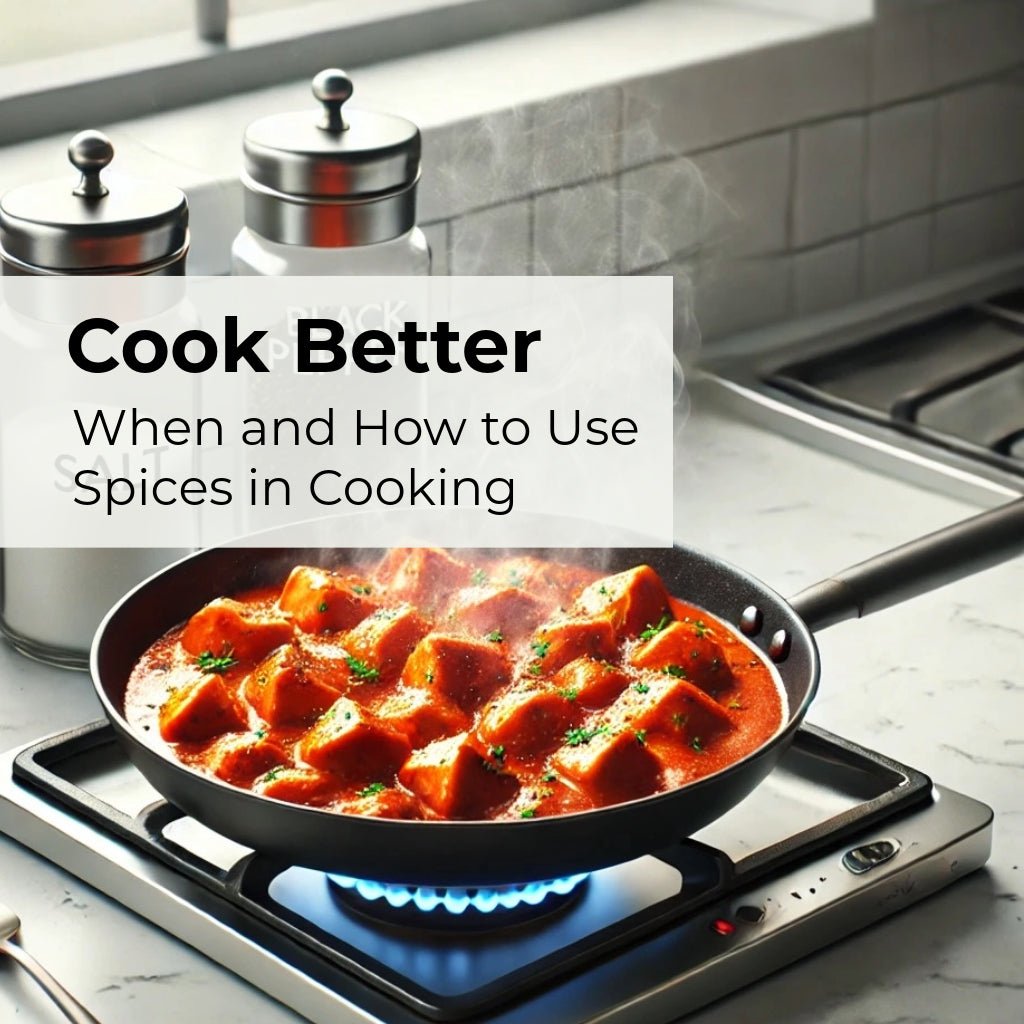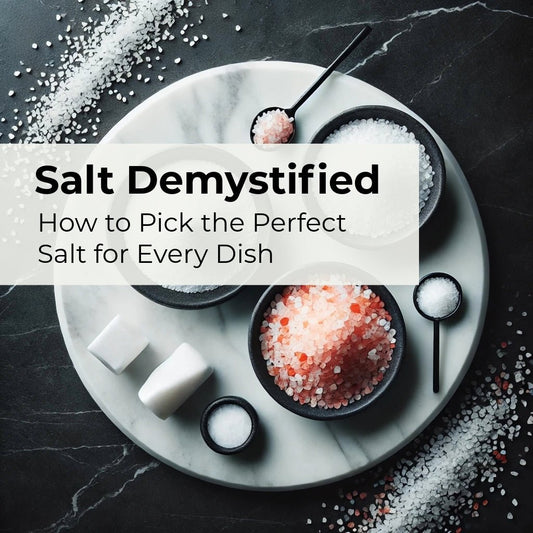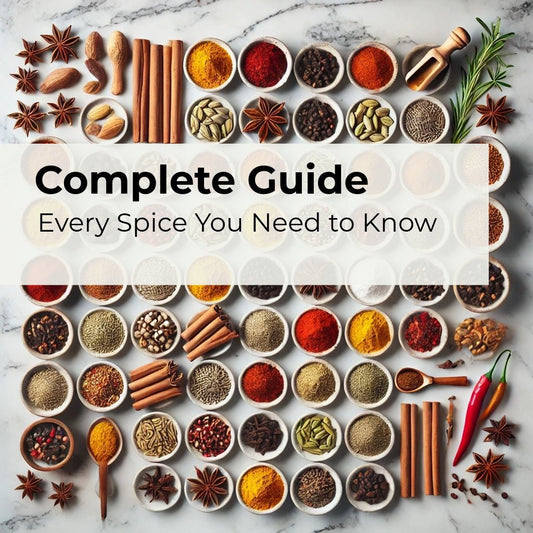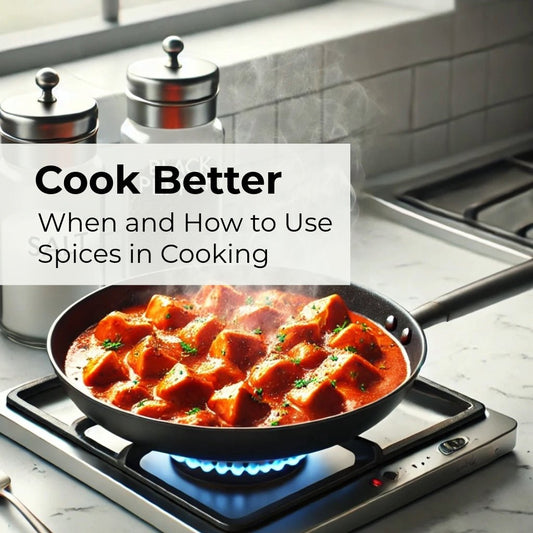
Cook Better: When and How to Use Spices in Cooking
Share
If you’ve ever wondered why your dishes taste bland or why some flavors seem to disappear during cooking, you’re not alone. Getting the timing right for adding spices can make a huge difference in how your food turns out. The good news is, you don’t need to be a pro chef to season your food perfectly. By learning when to add certain spices, you’ll elevate your cooking and impress your taste buds.
Here’s a simple breakdown of when to add spices during the cooking process to get the best flavor:
Table of Contents
- Early in Cooking: For Spices that Need Time to Develop
- Midway Through Cooking: Balancing Bold and Subtle Spices
- Late or Finishing Touch: Fresh and Aromatic Spices
- Salting: Gradual is Key
- For Slow-Cooked Dishes: Give Your Spices Time
- Bonus Tip: Spice Blends Make it Easy
1. Early in Cooking: For Spices that Need Time to Develop
Some spices need time to fully release their flavors, especially when you’re cooking dishes that simmer or roast for longer periods. Spices like cumin and mustard seeds benefit from what’s called “blooming” – heating them in oil or fat early in the cooking process. This technique unlocks their essential oils, making their flavor more intense and aromatic.
- Use this method for: Curries, stews, stir-fries, and sauces.
- Why it works: Blooming spices in oil allows their flavor to infuse the entire dish, rather than just sitting on top of the food.
Examples of Spices to Add Early:
- Cumin
- Mustard seeds
- Coriander
- Fenugreek
- Turmeric
2. Midway Through Cooking: Balancing Bold and Subtle Spices
For spices that have a strong flavor but can become overpowering if cooked for too long, you’ll want to add them midway through the process. Think of spices like paprika or chili powder. These spices need time to mingle with the other ingredients but can become bitter if left to cook for too long.
- Use this method for: Soups, sauces, roasted vegetables, and baked dishes.
- Why it works: Adding spices midway gives them time to develop but prevents them from losing their freshness or becoming too intense.
Examples of Spices to Add Midway:
- Paprika
- Chili powder
- Cayenne pepper
- Garam masala
- Allspice
3. Late or Finishing Touch: Fresh and Aromatic Spices
Some spices and herbs lose their punch if they’re exposed to heat for too long. Spices like ground black pepper or fresh herbs like basil and cilantro are best added toward the end of cooking or even just before serving. This ensures their bright, fresh flavors stay intact.
- Use this method for: Grilled meats, salads, soups, and pasta.
- Why it works: Fresh spices and herbs provide a burst of flavor that complements your dish without overpowering it.
Examples of Spices/Herbs to Add Late:
- Black pepper
- Cilantro (fresh)
- Basil (fresh)
- Chives
- Dill
4. Salting: Gradual is Key
Salt deserves its own section because it’s used in every dish but timing is critical. Salt can be added at different stages of cooking to enhance flavor without making food too salty.
- Early in Cooking: Salt meat, vegetables, or pasta water early to season the dish from within. This is especially helpful for soups, stews, and braises.
- During Cooking: Adjust and add salt as you cook to balance flavors. Taste as you go!
- Finishing Touch: A sprinkle of finishing salt just before serving adds texture and boosts flavor for salads, roasted vegetables, or grilled meats.
In fact, salt is so unique, we wrote a whole blog post about it: Salt Demystified: How to Pick the Perfect Salt for Every Dish
5. For Slow-Cooked Dishes: Give Your Spices Time
For dishes that simmer for hours, like stews, braises, or slow-cooked meats, the timing of your spices is crucial. Start with the hearty, bold spices early in the process to give them time to meld into the dish. Toward the end, finish with more delicate spices or herbs to keep the flavors fresh and vibrant.
- Use this method for: Slow-cooked stews, braised meats, or chili.
- Why it works: Slow cooking brings out deeper flavors, but finishing spices add complexity and balance.
Examples of Spices to Use in Slow Cooking:
- Bay leaves
- Star anise
- Cloves
- Cinnamon sticks
- Cardamom
6. Bonus Tip: Spice Blends Make it Easy
If you’re just starting out or feeling a bit unsure about which spice to add when, spice blends can be your best friend. They’re pre-mixed to provide a balanced flavor and are often designed for specific types of dishes. Whether it’s a curry powder, taco seasoning, or Italian herb mix, you can easily enhance your meals without needing to measure or worry about timing too much.
- Dried herb blends: These blends often contain delicate herbs (like oregano or thyme) and should be added toward the end of cooking to retain their fresh taste.
- Spice blends: Spices that include bold flavors (like cumin, paprika, or chili powder) are often best added early or midway to allow time for their flavors to meld.
Final Thoughts: Make It Your Own
The key to seasoning your food with spices is to experiment and find what works for you. While these guidelines can help improve your cooking, don’t be afraid to adjust based on your taste preferences and the dish you’re making. After all, cooking is about creating flavors that you and your family enjoy.
If you’re looking to make seasoning even simpler, stay tuned for Pynch Kitchen’s upcoming innovation, designed to take the guesswork out of measuring spices – making your cooking experience even more fun and flavorful. Join the waitlist now!









